Media | Articles
17 cars that were resurrected, for better or for worse
This story originally appeared on Hagerty Media in October of 2019. It is reproduced here with minor changes for timeliness.
Over the last 20 years, the auto industry has gotten into the habit of digging up its cold, dead nameplates and reintroducing modern versions of cars it killed off long ago, probably for reasons long forgotten. It seems to have begun with the reimagination of the Volkswagen Beetle back in 1998 and the reinvention of Mini by BMW in 2000.
Recent efforts have been a mixed bag. On the sports car side of things, we got the Toyota Supra and a new Nissan Z. SUVs were also a popular category, from the Jeep Gladiator to the Ford Bronco to the Land Rover Defender. Some popular models came back a little different than what we like to remember. Chevy exhumed Blazer for a sporty-looking crossover, not the Wrangler fighter we were hoping for. The Grand Wagoneer reemerged as a six-figure behemoth clearly aimed at blacktop, not backroads.
and the fact that Jeep is also working on a new Grand Wagoneer.
Here are 17 classic nameplates that have come back from the dead. There are others, but these are some of the best, along with a couple of losers.
Marketplace
Buy and sell classics with confidence
Acura NSX
20180911153111)
Honda stunned the world in 1991 when it launched the first-generation NSX supercar. Sold in America as the Acura NSX, the mid-engine machine was a technological tour de force, with an aluminum structure and body, a 270-horsepower all-aluminum DOHC VTEC V-6 with an 8500 rpm redline, and titanium connecting rods. It was as fast as a Ferrari and as civilized as an Accord. Production lasted until 2005. In 2017, the Acura NSX returned as an all-wheel-drive hybrid. Power comes from a twin-turbo V-6 combined with three electric motors and a battery pack to produce a total of 573 hp. Unfortunately, sales have been slow, and through the first seven months of this year, Acura has sold just 161 NSXs.
Chevy Blazer

From 1969–93, Chevy’s K5 Blazer was a brutish but civilized full-size SUV based on the underpinnings of the brand’s popular pickup. In 1994, the truck grew into a four-door and it was renamed the Tahoe. Chevy also used the Blazer name on the smaller S-10 Blazer, which was based on the S-10 compact pickup. That vehicle morphed into the Trailblazer in 2002, which was laid to rest with the introduction of the Traverse in 2009. And now the Blazer is back for 2019, only it has no connection to the original K5. Instead, it has become a car-based crossover with about as much off-road capability as a Camaro. It even shares some of the Camaro’s design inside and out. Although all-wheel drive is available, Chevy calls the new Blazer “street-inspired.” We call it a missed opportunity.
Chevy Camaro

In 2002, after 35 years of continuous production and four generations, Chevy built its last Camaro. Or so we thought. It came back in 2010, emulating the design of the muscle cars first generation, produced from 1967–69. It was a response to the new retro design of the 2005 Ford Mustang and the recreation of the Dodge Challenger, which launched in 2008. Chevy even dug through its archives and relaunched many classic Camaro models, including the RS, SS, Z/28 and COPO. Today, the new mid-engine C8 Corvette is grabbing all the headlines, but the Camaro’s sixth generation, launched in 2016, remains in production.
Dodge Challenger

Let’s forget that Dodge sold a front-wheel-drive version of the Challenger, based on the Mitsubishi Galant, from 1978–83. The original Challenger, sold from 1970–74, is the one that really matters. It shared its platform with the Plymouth Barracuda, and its R/T models were powered by legendary V-8s, including the 440 Six-Pack and the 426 Hemi. Dodge launched a modern interpretation of that iconic muscle machine in 2008, with the R/T returning in 2009. Today’s Challenger not only remains in production, but its supercharged Hellcat and Demon models reign supreme as the quickest and most powerful American muscle cars ever.
Dodge Charger
20190814174802)
First introduced in 1966, the Dodge Charger remained in continuous production through 1978 and four generations. A front-wheel-drive K-car-based version appeared from 1982–87, highlighted by the turbocharged Shelby model, but then the Charger went away for nearly two decades. It was reinvented in 2006 as a rear-wheel drive four-door sedan, using the platform that would also be used for the Challenger two years later. The extra doors were quite controversial, but there was an R/T model with a Hemi V-8 under the hood. Now in its seventh generation, the Charger shares its supercharged Hellcat Hemi with over 700 hp with the Challenger, making it the most powerful American sedan in history.
Fiat 500

Iconically cute, the original Fiat 500, or Cinquecento, was built from 1957–75. It was a tiny, economical, and affordable city car with an air-cooled engine mounted in the back, just like the Volkswagen Beetle. Nearly 4,000,000 were produced, but the 500 was never sold in the United States. With the successful return of the Beetle and the Mini, Fiat went back in time and relaunched a modern version of the 500 in 2007. Now front-engined with front-wheel drive, it was significantly larger than its namesake, but it captured the look of the original perfectly and became very popular in Europe. Fiat returned to the U.S. market in 2011, bringing the 500 to America for the first time. Today, it offers a turbocharged Abarth model, reintroducing another classic nameplate, as well as an electric version. However, it will be discontinued again after this model year.
Ford Bronco
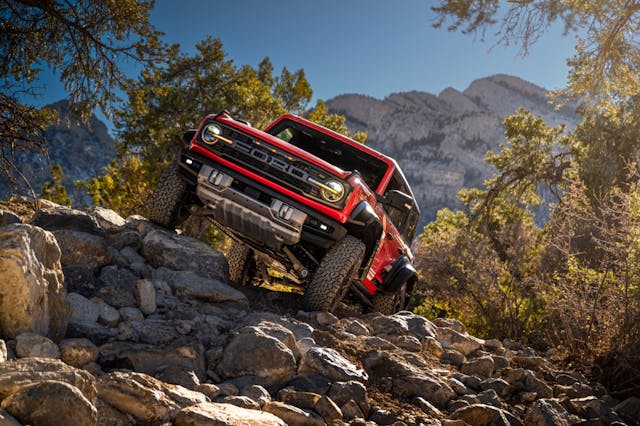
First-generation Ford Broncos, built from 1966–77, have been pegging the popularity meter with collectors for nearly a decade, and consequently their values continue to rise. In 1978, the two-door SUV went full-size to better battle Chevy’s Blazer, and it remained in that configuration for five generations, with production ending in 1996. Ford also produced the smaller Bronco II from 1984–90, and although it was successful, it never really captured the magic of the original. Ford unveiled the Bronco Concept 14 years later at the Detroit Auto Show, and it has been teasing us with the SUV’s return ever since. Well, it’s finally about to happen. The 2020 Ford Bronco will be based on the Ford Ranger pickup’s ladder frame and is promised to offer true off-road capability. We hope it’s a true competitor for the Jeep Wrangler.
Ford Shelby Mustang GT350/GT500
20190515130127)
Ford turned back the clock in 2007, reintroducing the Shelby GT500 Mustang, a model that hadn’t seen production since 1970. The new version was supercharged and packing 500 hp, making it the most powerful factory Mustang ever. There have been a couple of iterations since; the most recent was the 2013–14 model with 662 hp. Well, here comes another. The 2020 Shelby GT500 will be packing a 760-hp supercharged 5.2-liter V-8 and a dual-clutch automatic gearbox.
Ford let the Shelby GT350 name lie dormant quite a bit longer. That model was originally sold from 1965–70 only to finally be reintroduced in 2016. It remains in production today with a 526-hp flat-crank 5.2-liter V-8 and a six-speed manual.
Ford Thunderbird
20190517172206)
Ford’s original retro redo was actually the 11th generation of its Thunderbird, which was sold from 2002–05. It was the first T-Bird in five years and it featured a modern take on the model’s original design, which had debuted in 1955. It was a two-seater for the first time since 1957 and its taillights emulated the look used by the model’s third generation, sold from 1961–63. Ford even brought back the iconic porthole hardtop used on 1956 and ’57 models. Still rear-wheel drive, the new Bird shared its platform with the Lincoln LS and Jaguar S-Type sedans. Ford owned Jaguar at the time and also used its 3.9-liter 252-hp V-8 in the T-Bird. Unfortunately, the new T-Bird’s modern-style interior, which was also shared with the Lincoln, felt disconnected to the convertible’s exterior design and the car wasn’t successful enough to warrant a successor.
Jeep Gladiator
20190329195902)
Many forget that Jeep has a solid legacy of successful pickups, and from 1962–71 it offered the Gladiator, which shared its frame and front suspension with the Wagoneer. The Gladiator name was ditched after 1971, but Jeep continued to produce pickups until 1988. The Gladiator Concept, a Wrangler-based pickup, made its debut 16 years later at the Chicago Auto Show, and the wait was on. Finally, it’s a reality. The 2020 Jeep Gladiator is now on the street (or is it the trail?) and it’s a sensation. It’s the first four-door pickup ever offered by Jeep, and the first convertible. It’s V-6-powered and there’s a Rubicon version with a lifted suspension, larger tires, and front and rear locking differentials.
Land Rover Defender

With lineage back to the original Land Rover launched over 70 years ago, the Defender name was first glued to the back of the 90 and 110 models in the 1980s. Sales began in the United States in 1993 and only lasted four years, but Defenders, in both the 90-inch and 110-inch wheelbases, have become modern classics and command ever-increasing values. Sales continued in other parts of the world, but production of the rugged SUV finally ended in 2016. Four years later, the Defender is back. At launch, the Defender 110 will have an optional third row seat and a shorter wheelbase Defender 90 will be added soon after. Under the hood will be a 300-hp 2.0-liter turbocharged four-cylinder or a 400-hp 3.0-liter V-6. Prices will start just over $50,000.
Nissan GT-R
20190415183105)
It has been 11 years since Nissan brought back its high-performance icon, the GT-R. The front-engine, all-wheel drive, turbocharged coupe was the first since 2002, and it was the first GT-R ever sold in America. The nameplate, originally introduced in 1969, dates back five generations of the Nissan Skyline. Initially it only lasted until 1973, only to be reintroduced in 1989. And then the legend of the GT-R truly began with its next three all-wheel drive generations (R32, R33, R34), powered by the RB26DETT twin-turbocharged inline six-cylinder. Paul Walker drove an R34 in a few of the Fast and Furious movies, which only intensified the GT-R’s global popularity. Today, the GT-R Nismo is packing 600 hp.
Nissan Z
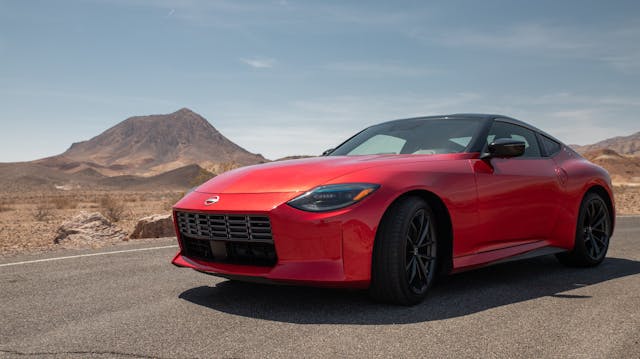
Nissan’s Z has had its ups and downs over the last 50 years. First introduced as the Datsun 240Z in 1970, it landed in North America as the Nissan 300ZX. Production lasted until 2000, along with sales in Japan, and then the Z took a three-year hiatus. The all-new 350Z was introduced in 2003, but the twin-turbo and 2+2 models were history. All Zs were now naturally aspirated with a 3.5-liter DOHC V-6, and they were all two-seaters. In 2009, the car received another redo and a larger 3.7-liter engine. The 370Z remains in production today, basically unchanged for the last 10 years.
Maserati Ghibli

A rival to the Ferrari Daytona, the original Maserati Ghibli was a sexy V-8-powered front-engine sports car. Designed by Giorgetto Giugiaro at Ghia, who went on to design the VW Golf, DeLorean, and Lotus Esprit, it featured pop-up headlamps, a 2+2 coupe and two-seat Spyder body styles. Production lasted from 1967–73. The name, which represents a wind in the Libyan desert, went dormant until the 1990s. Based on the Biturbo, the second-generation Ghibli, lasted from 1992–98. In 2014, Maserati brought the Ghibli back, this time as a turbo V-6-powered luxury sedan smaller than its Quattroporte. It remains in production today, essentially unchanged over the last half decade, but there’s a new twist on the horizon.
Pontiac GTO
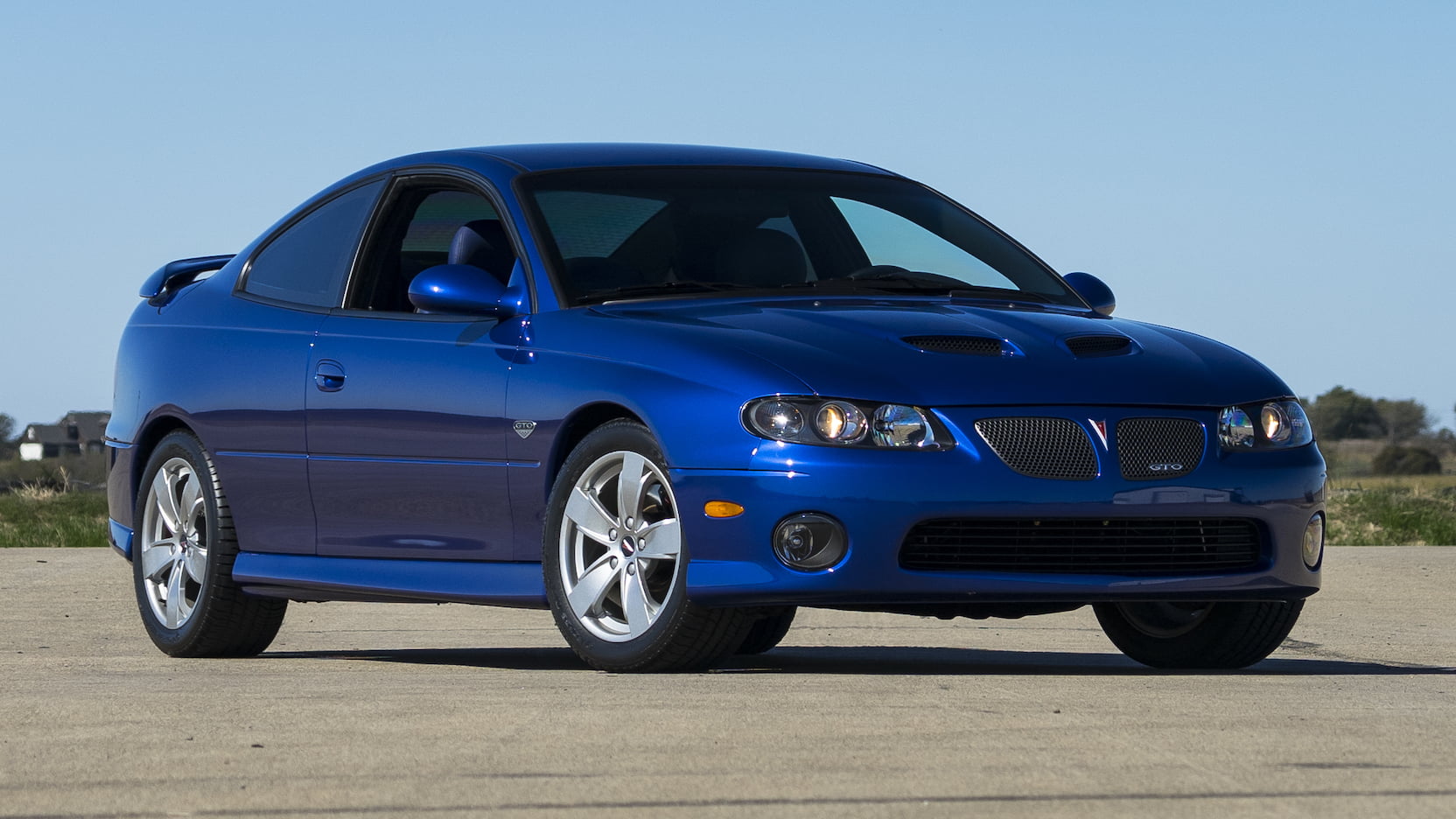
Few cars have had an impact on the market like the original 1964 GTO. Created by Pontiac’s chief engineer John DeLorean and his team, and brilliantly marketed by Jim Wangers, it single-handedly launched the original muscle car era. That era was short lived, however, and despite a few redesigns and four generations, GTO production would last only a decade. By the early 2000s, Pontiac was selling Azteks, and the brand was on its last legs. Even the Firebird had been killed off in 2002. In a last-gasp attempt to capture some of its old glory, in 2004, Pontiac threw GTO badges on the LS-powered, rear-wheel drive Holden Monaro from Australia and crossed its fingers. It didn’t really work. Sales lasted just three years and Pontiac was laid to rest in 2010.
Toyota Supra
Originally, the Supra was a more powerful and sportier version of the Celica. Always rear-wheel drive, it debuted in 1978 and lived successfully through two generations. Then in 1987, it became its own model, and for the first time Toyota added a turbocharger. The Supra Turbo was packing a 231-hp 3.0-liter inline-six and sales lasted until 1992. The following year, Toyota created a legend, the fourth-gen Supra, powered by its 2JZ inline-six. Both naturally aspirated and twin-turbo versions were available, with the boosted version packing over 300 hp. Tuners got to work, and eventually 1000-hp MKIV Supras with stock engine blocks weren’t hard to find. Unfortunately, sales in America lasted only five years. And now the Supra is back. Toyota has partnered with BMW to create the modern version, a two-seat coupe powered by BMW’s twin-turbo 3.0-liter inline-six rated at 335 hp. It’s a mechanical twin to the new BMW Z4 Roadster, and it’s one of the most anticipated new cars this year.
Volkswagen Beetle
20180404162504)
After more than 20 years and two generations, Volkswagen has discontinued its modern interpretation of the Beetle. This is, of course, the second time the Bug has gone bye-bye. The original Beetle, designed by Ferdinand Porsche in the 1930s, remained in production somewhere in the world from 1938–2003. Over 21 million were built, all rear-engined, all air-cooled. Sales of the original ended in the United States in 1979. The New Beetle was introduced 19 years later, based on the front-engine, front-wheel drive underpinnings of the VW Golf. It was successful enough to warrant a successor in 2012. The flower vase on the dash was gone, but the spirit was still there. The Final Edition, a trim level with the turbocharged 2.0-liter engine and diamond-stitched leather seats, is available now.
***
Check out the Hagerty Media homepage so you don’t miss a single story, or better yet, bookmark it. To get our best stories delivered right to your inbox, subscribe to our newsletters.
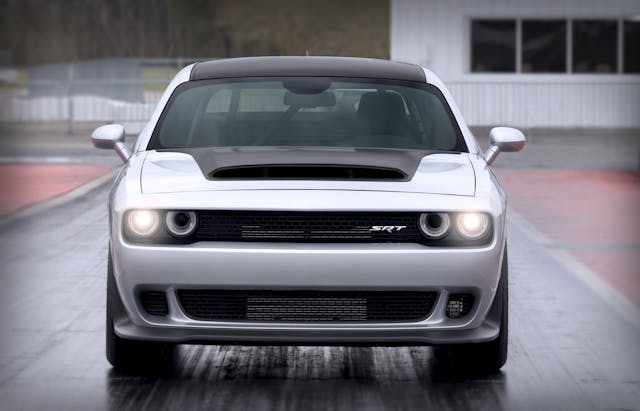








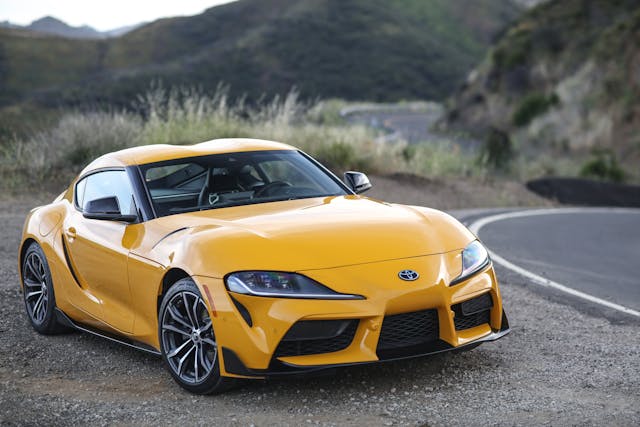




Once again, Hagerty shows no love for the MINI Cooper…
The new Ranger looks an awful lot like a Sport Trac
Someone already pointed out that the Mitsubishi-based Challenger (and Sapporo) were rear wheel drive, not front wheel drive as stated in the article, but also the 1980’s Chargers were not K-based but actually L-body cars as their platform pre-dated the K-car by a few years.
Randy asked about Mini/MINI, and I agree with him and Nova, MINI is a resurrected brand that fits in this article. The new MINI story has lots of subplots too, with the early first gen software challenges that were gently resolved until it became the one-to-own 2005.5 and 2006 magnificent 6-speed drivers, and the saga around the [uniquely clutched] CVT as an automatic offering (we had both :-). There was the BMW Group mass-customization experiment for BMW sedans that was called MINI (it worked to the surprise of many of those Germans flying to Longbridge each week!). And then the evolution into a real car brand with logistics and resale headaches, from it’s very early quirky launch excitement, to ‘losing their way’ on styling, to regaining the MINI feeling in the current generation. ’67 Austin Cooper S, ’02 MINI Cooper CVT, ’06 MINI Cooper S
Did anyone state: The 1978–83 Dodge Challenger was REAR wheel drive!!!
Right. I’m not sure how someone would have thought it was based on the front drive Galant. Big miss in this article.
Ford brought back the 500 name to an audience that didn’t care, so fixed that buy calling it a Taurus which just confused people as it wasn’t the same niche of vehicle the original Taurus was.
Not like Maverick is really a play for true nostalgia though.
Old names will get recycled as long as they think it makes buzz.
this is a strange article. It references 2020 cars as if they are coming in the future… but the article is dated 2023. Great resurrection of an article, but why not bring it to the current decade?
Did they really bring the Charger back with little more than a name? When I think Charger, I think two doors. I will never consider a four door an authentic muscle car no matter how much muscle it has. Having all the graphics etc. on a four door just looks silly to me.
totally agree with you there I’ve owed 3 Chargers in my life a 73, 72 and 68
Real Chargers don’t have 4 doors
The original Mustang was a cheap re-body of a Pinto. They sold a million of them because the secetaries could affort it. Now, you would be hard pressed to find one for les than $4000.00 or $5000.00 and premium gas is required at 20 cents a gallon more than regular. And the Mach-e is a truck with a horse on the tailgate.
The Bronco was also a cheap alternative to a Jeep that could go off-road and you didn’t have to worry about trashing it. Now, you probably won’t see one on a trail, because of the Cadillac price. And a Maverick is a new truck.
I just hope that the American car dealers wake up and start selling cars again in my lifetime. All the Japanese and Korean companies seem to have no trouble selling cars here. Is the Camaro dying as the last General Motors car?
Rebody of a Falcon, not a Pinto. I wish it was the Pinto, that thing had a killer front suspension.
Plus rack and pinion steering
Oh yeah.
Mustang ll, 74 – 78 was a Pinto.
Oh yeah, that’s for sure. And that’s one reason why I appreciate the Mustang II more than most folks.
How about a REAL Blazer???
The two Shelbys for sure!
The two Shelbys for sure.
I’ve had a 1966 GTO Hardtop and a 1966 GTO Convertible and currently have a 1970 GTO hardtop. This will be the last GTO for me and I believe it should have been the last GTO for Pontiac too.
I’m still waiting for the new Toyota Supra. I don’t recognize the current faker as a Toyota or a Supra.
Dodge Dart